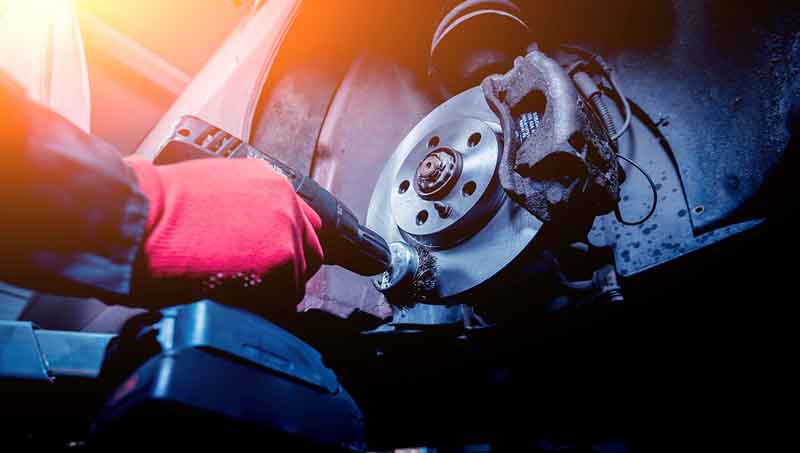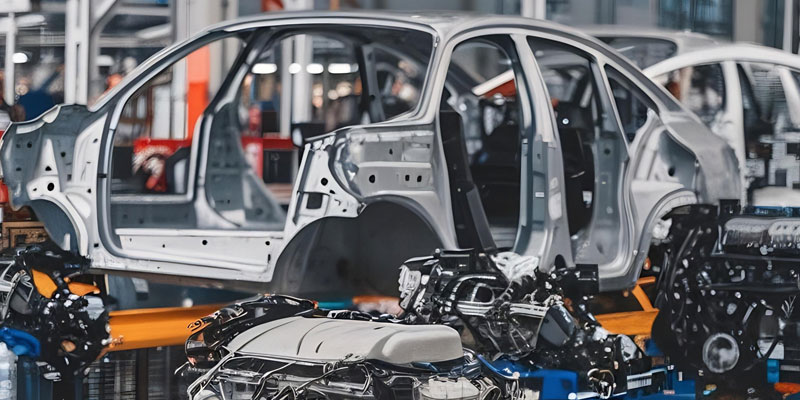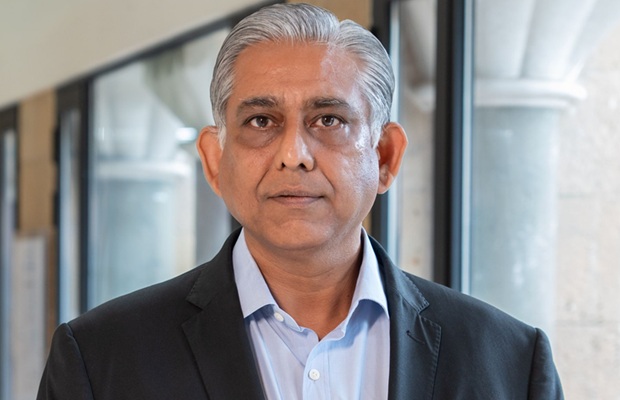Schedule a Call Back
Auto‘motivated’ for 2025
 Articles
Articles- Feb 16,23

The passenger car industry in India has evolved over time. From having only one or two manufacturers in the 70s to becoming the third largest passenger car market in the world, we have come a long way.
Over the course of its growth, the automotive industry saw definition of quality emerge from meeting stated requirements of end users to include unstated requirements. Naturally, this impacted the manufacturing domain when it comes to choosing type of technology, scale of processes and associated skill sets of people.
An Automotive Mission Plan (AMP) is spelt out by the government signifying the importance of automotive industry to the economy. It may be noted that India’s component manufacturing industry is a crucial player in realising AMP including exports, which by now most of the companies are well accustomed to.
Emerging trends and opportunities
Post Covid, mobility trend saw a reversal from consumers to go back to private mobility as a means of safer transportation from health perspective. This has impacted the scale, volume and technology in response to demand volatility.
In core manufacturing, the pandemic initially posed a lot of challenges as manufacturing was always about working in groups with close contact. The sector had to alter manufacturing processes and meet demands of the customer without much human contact.
This opened up innovation among engineers to improve in such a way that the process is more robust, using techniques of standardization, digitization and automation – all with a view to reducing human contact.
For example, in our company that has 19 manufacturing plants and corporate offices, employing over 10,000 people, we have implemented 50 operational enhancement projects and 7 transformational projects in the space of automating and digitizing the work flow. This is both in manufacturing and non-manufacturing domains.
Trade-offs ahead of manufacturers
The emerging trends in the demand and the associated opportunities presented in domestic and exports markets necessitates certain trade-offs for every manufacturer. Following are a few:
In addition, the powertrain technology at the OEM is gradually changing from conventional IC engine products to electric. The investments made for the manufacturing of IC engine-based components in their current form, may or may not be relevant in the future. So, manufacturers must ensure they do not scale up in haste; their investments made must be adaptable for the future.
The trade-off we are talking here is to do with a) timing of investments and b) adaptability of investments for fast-changing product space.
For example, we tend to start the assembly related investments ahead of time and build flexibilities for potential product changes. In case of machining, we commit for investments closer to the demand.
Do you buy what you cannot make or do you make what you cannot buy?
Let us compare India with developed automotive markets like Europe and USA. On business practices, skill and the type of processes, there will not be much of a gap between the OEMs, tier-1s, and tier-2s in the developed countries. However, there still exists a gap in India between OEMs, tier-1s, and tier-2s. ‘Make or buy’ decision becomes a key attribute of business.
This trade-off is well applied in our case, not just on direct material purchasing but also on capital equipment purchasing. We buy general purpose machines from established manufacturers. However, we manufacture special purpose machines, assembly and test rigs by ourselves through a separate division.
Indian manufacturing has a choice to make between scaling up on manually intensive processes versus automation, especially with rising labour costs. The cost of automation can slowly be seen coming down over the last decade.
The advantage to India exists in terms of the availability of skilled manpower for understanding, conceptualising and gearing up. The speed with which we can assimilate technology, change and train our workforce is high.
The challenge is to ensure the same quality and safety levels of products even if operating with different scales, volumes, and variety combinations. The right blend of technology and people's availability is what will take us ahead. The decision you took in 2020 need not hold good for 2025.
For example, in our company, we were producing heavy sheet metal parts through manual transfers between presses. As the volumes went up, we were able to conceive and implement robotic automation, just by relaying the presses and automating the component transfers in between – all without shutting the line for a long period.
Another significant trade off ahead of us is to buy from global sources or to localise in India.
Geopolitical risks compelled the entire supply chain to look at local alternatives. The push from the government to promote local manufacturing (Aatmanirbhar Bharat) became a catalyst for frugal solutions.
Traditionally, our dependence on imports was high. But now, the availability of products locally makes us think twice before importing. OEMs are also pushing the component manufacturers to localise.
With EV penetration going strong, a lot of new components which are currently being imported can also go local. Make in India will have a huge role to play in localising these components.
While discussing these specific trade-offs, there are a few overlaying factors, which helps one’s decision making vis adopting newer technologies and skilling the workforce.
Adopting newer technologies
The manufacturing industry needs to adopt newer technology. India is different when it comes to adopting, either as a user consumer industry or as a manufacturing industry.
In manufacturing, robotics and automation which are at the high end of technology spectrum can also be expected to be adopted as it results in improved efficiency in combination with digital manufacturing.
The trade-off in manufacturing between manually intensive processes versus automation that was mentioned earlier is relevant and must be evaluated at each stage of expansion.
Are we skilling our workforce enough?
With newer people joining the workforce, skill development is of utmost importance. What we need to address as a country is for people available in the industry to possess skills appropriate to emerging technology.
A few companies have skill development centres that have established curricula for teaching the basic skills required to be on the shop floor. In addition to general skills, there are specific skills imparted that are relevant to the particular product or process, he/she will be working on.
This also calls on the need for constant evaluation of curriculum at college level. As technology changes in the automobile industry, the curriculum is expected to follow the trend.
The way forward
The manufacturing industry in India has been growing, unlike a few other countries where it is driven mostly by the government or policymakers. Our government and policies have helped/ aided and acted as catalysts. Hence, the manufacturing growth in India is long and sustainable.
There will be significant growth in the automotive industry. This is unlike some countries which have relied heavily on export. India will have growth on the backbone of strong domestic demand, topped up with export.
The number of components that will be sourced from India for the manufacturing of the products is going to increase and we are currently at a crucial stage for scaling up in terms of skills and capacity building.
Irrespective of domestic or export, there will be plenty of opportunities in the coming decade, for OEMs and component suppliers. But the challenge will be for the entire supply chain to gear and scale up in addition to adopting newer technologies, up-skilling the workforce with proper trade-offs.
About the author:
K Vasudevan is the President & Head of Light Vehicle Business Unit at Brakes India. He is overall responsible for complete business for passenger cars and light vehicles up to 3.5 tonnes. His 35+ years career in Brakes India spanned across various functions, including engineering research & development, manufacturing, project management, technical marketing, commercial marketing, and complete business, including P&L for his business unit.
Related Stories

EV transition and tariff wars redefine India’s auto components play
India’s auto component industry is poised to hit $ 145 billion by FY30 from $ 80 billion in FY25. Yet high US tariff, EV transition and heavy reliance on imports from China expose vulnerabilities,..
Read more
MAHLE India to double business in 4–6 years: Milind Godbole
MAHLE India to double business in 4–6 years: Milind Godbole
Read more
Toyota Kirloskar Motor and NISE partner to advance India’s green hydrogen goals
The partnership represents a critical convergence of industry, research, and national policy to accelerate India’s transition toward a clean, secure, and hydrogen-based energy ecosystem.
Read moreRelated Products

Automotive Oil Pump
Kalpak Auto Pvt Ltd offers a wide range of
automotive oil pump.
Tata Motors unveils facilities for development of Hydrogen propulsion tech
Tata Motors, India?s largest automobile company, unveiled two state-of-the-art & new-age R&D facilities for meeting its mission of offering sustainable mobility solutions. The unveilings constitute of Read more
Tata Motors plans petrol powertrain for Harrier and Safari SUVs
Tata Motors is in the process of developing a new petrol powertrain for its premium sports utility vehicles, the Harrier and Safari, as confirmed by a senior company official. Currently, these models Read more














